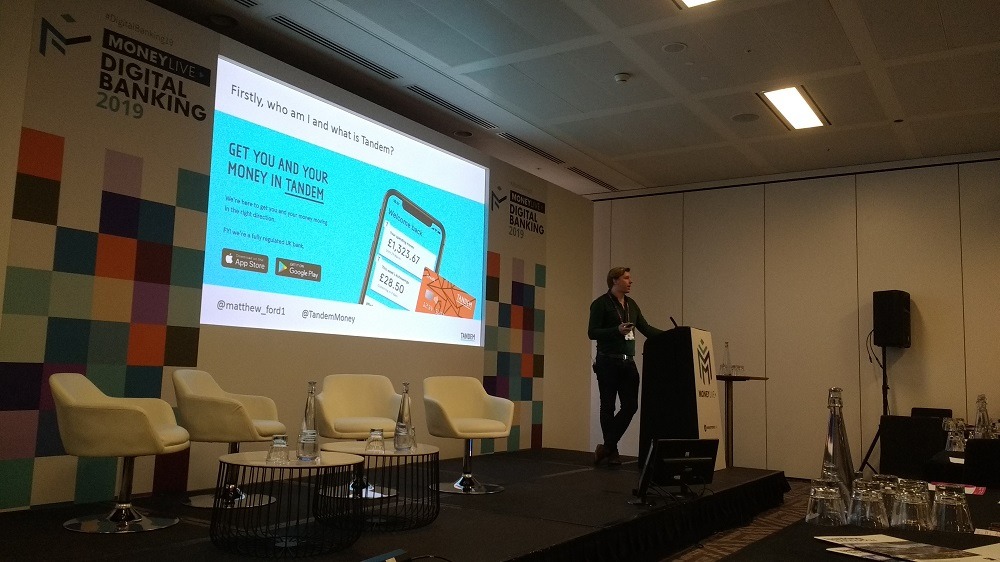Speaking at the MoneyLIVE Digital Banking 2019 event in London, Tandem's Matt Ford said new approaches to onboarding are needed to really benefit customers

Banking needs to rethink its onboarding processes for new customers and go beyond simply digitising old manual processes.
So says Matt Ford, the chief product officer at UK fintech Tandem, addressing the MoneyLIVE Digital Banking 2019 conference in London today (26 June).
Referencing a famous quip from automobile pioneer Henry Ford, he said current trends in the industry of just updating the traditional processes to suit the digital environment are at risk of “creating faster horses”, rather than solving real customer problems.
Banks should instead reconsider how they welcome new customers to their businesses by looking at simpler and more personalised ways to get the sign-up process completed.
A new approach is needed for customer onboarding
With the digital transformation of banking well underway, the temptation for financial institutions is to simply apply new technology to tried and tested ways of doing things.
But for Mr Ford, this process needs to be taken a step further by the tailoring the specific requirements of each sign-up to the individual, based on their actual needs – rather than implementing a “one-size fits all” policy.
He said: “Let’s prevent tunnel vision and funneling customers through one single journey.
“Let’s tailor the experience and simplify it as much as possible for the core problem that they’ve got.

“The steps we ask customers to go through today look pretty similar to when they were on paper – only digital.
“That cannot be the end state – simply digitising a manual process is not the answer. We need to think incredibly differently about what we should be doing.”
Onboarding in banking is an important aspect of customer experience
First impressions count, so helping new customers through the registration process is an important thing for any bank to get right.
Certain jobs, like identity verification or credit checks need to be carried out by banks when they accept new customers, but financial institutions have previously taken the opportunity to gather a range of additional information from customers to assess their suitability for other products and services.
Mr Ford said: “Onboarding is so important because it’s the first chance you get to begin developing relationships with customers.
“It’s a time to put your best foot forward and impress, and it’s the time when you start to set the relationship you are going to have with your customer.”
The digitisation of financial services has led many banks to attempt a more streamlined approach to onboarding, but Mr Ford believes that many companies have “missed the point” by simply trying to reduce the number of questions a new customer must answer.
He said: “It’s not about reducing the amount of information that you need, loosening some of the thresholds or taking on a little bit more risk to make it simpler for the customer – it’s about really rethinking what you actually want to solve for them.”
Revolut is a good example of how onboarding in banking can be improved
UK challenger bank Revolut was identified as an example of getting this new approach to onboarding right, by “narrowing the scope” of how new customers are brought into the fold.

Someone can go from downloading the Revolut app to trading currencies in a matter of minutes, due to the simplicity of the sign-up process the fintech has introduced to do so.
Mr Ford said: “Revolut doesn’t take the approach of asking ‘what’s every single question we’re going to need for every single product we might want to offer customers?’
“Instead it asked ‘what’s the core proposition for the vast majority of our customers? – and let’s get them value as quickly as possible.’
“It’s an incremental small step forward, and breaks the customer onboarding journey down into the smallest component parts to get the customer to value.
“Revolut is a really nice example of how we should be thinking about products and onboarding.
“It isn’t about asking every single question and getting every single bit of information so that we can sell more stuff to customers, it means thinking about the customer.”
